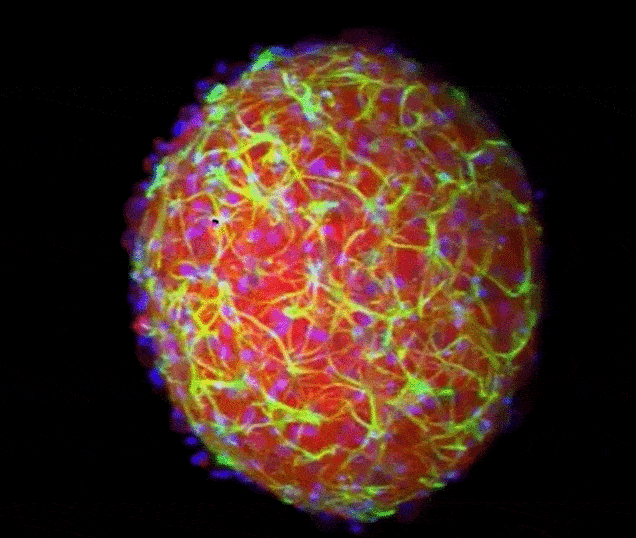DMT may be a strong foundation for developing an antidepressant.

A team of scientists in Brazil have grown mini-brains dosed with DMT to study its psychedelic effects
The Brazilian team dosed a batch of these mini-brains (also known as cerebral organoids) with a compound called 5-MeO-DMT, then used mass spectrometry to analyze how the molecule affected the expression of different proteins in the cerebral models.

while Downregulated proteins, included those that can trigger inflammation, degeneration and lesions in brain tissue, which suggests that DMT may be a strong foundation for developing an antidepressant.
Instead, the researchers say their findings highlight that further study is needed to determine just how its benefits could be developed into a potential treatment for mental illnesses and other brain disorders.
Stevens Rehen, lead researcher on the study stated:
"For the first time we could describe psychedelic related changes in the molecular functioning of human neural tissue, our study reinforces the hidden clinical potential of substances that are under legal restrictions, but which deserve attention of medical and scientific communities."
What Is DMT?

DMT (Dimethyltryptamine) is a hallucinogenic tryptamine drug that occurs naturally in many plants and animals.
It is a class A drug which means that it's illegal to have for yourself, give away or sell although a number of indigenous people’s traditions and religions use drinks or food, such as ayahuasca, that contain DMT.
It is also referred to as the "spirit molecule" due to the intense psychedelic experience.
What Are Mini-Brains?

Mini Brains display remarkable similarity to the structure and organization of the human cerebral cortex—the region responsible for higher-order functions like language, thinking, perceiving and information processing—but they also possess working neurons capable of transmitting signals to one another.
Mini-brains grown in the lab have proven to be useful models and help to give researchers an accurate neuroscience platform that could dramatically replace hundreds of thousands of animals used in neurology labs for brain research and drug testing.